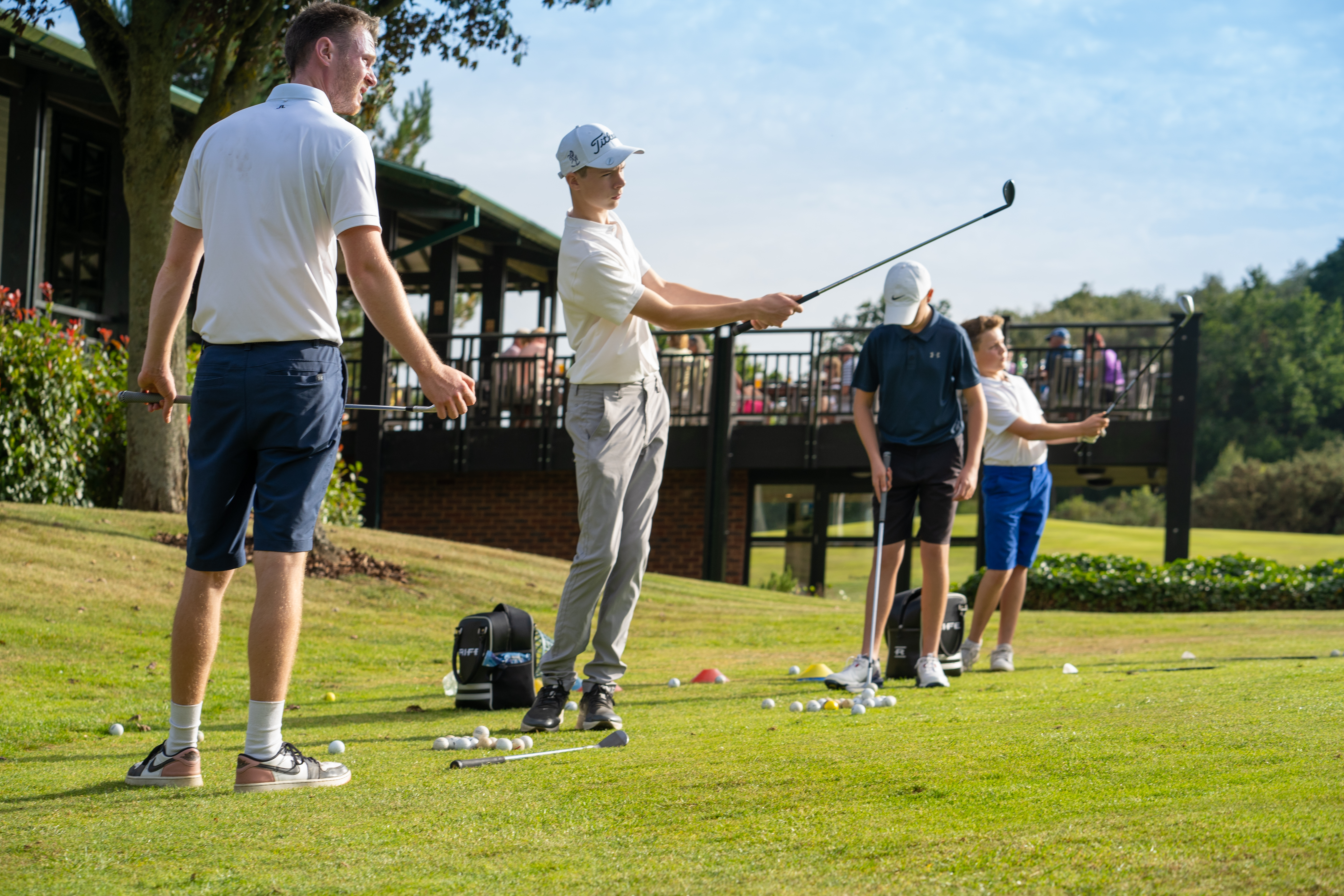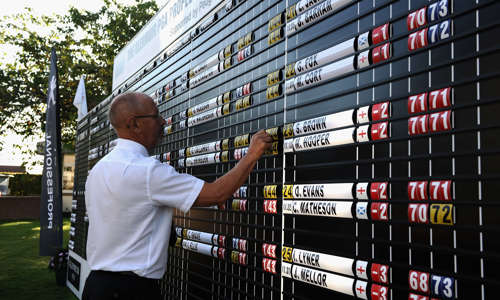Expanding junior golf programmes is crucial for nurturing the next generation of golfers. Successful programmes not only introduce children to golf but also keep them motivated and enthusiastic about the game.
Here’s how two thriving junior programmes have achieved impressive growth and sustained engagement, offering valuable insights for other PGA Members looking to develop or enhance a junior golf programme.
Growing success: The Growing Golf Programme
Mark Trow, PGA Member, Coach and Director of the award-winning Growing Golf programme, exemplifies successful expansion and engagement. Launched in 2017 at Kings Hill Golf Club in Kent, Growing Golf has expanded to six venues across the Southeast of England, including Poult Wood, Hilden Park, Tudor Park, Nizels, and Tenterden. This success stems from a clear vision and strategic execution.
“We see just under 300 children in our junior academy programme across our six venues, so we run about 40 junior sessions per week. We also run after-school sessions throughout the year, reaching another 100 children each week, so around 400 children in total receive coaching from Growing Golf each week—a significant increase from the initial 35. We also partner with Kent Golf and run several disability coaching sessions, which is very rewarding,” Trow explains.
The early stages
Coaches across both programmes share a passion for the game and believe in the physical, social, and psychological benefits that golf offers.
Ient highlights the challenges of starting a junior programme: “The first two years are tough, and it might feel like you're getting nowhere. But once you have a solid foundation, it becomes a snowball effect.
“As long as you're consistent and you don't take your eye off the ball, their friends join. And we're at the stage now where it's not necessarily beginners coming, it's more that golfers from other clubs who are already good golfers are starting to join here.”
Making Lessons Fun
From the outset, it’s vital to convey that golf is enjoyable. Ient believes success lies in dispelling the notion that golf is slow and serious.
“This should always be about having fun,” he explains.
“Often there’s a perception of golf that it's slow and serious, and it's about completely changing that perception of golf to make it just as fun as they see football or other sports. And as soon as they see that, the better for them.”
“I conduct two group lessons on Saturdays, each lasting an hour with a maximum of eight kids. Any more, and it’s challenging to monitor them effectively. Kids love activities like the longest drive, and getting a driver in their hands during the first lesson is crucial. Even if they miss or top the ball, connecting with one good shot will be the one they remember.”
Growing Golf adopts a similar approach, ensuring engaging lesson structures that maintain participant interest.
“As coaches, our main focus is to keep the children active, hitting, and learning,” Trow says.
“They’re never standing around with their hands in their pockets. Our warm-ups are dynamic, and our end-of-session skills tests are unconventional. The children also enjoy our team games and ‘compete against the coach’ lessons.”
Keeping Them Engaged
Engagement from the very first session heavily influences whether children return with the same enthusiasm and both programmes emphasise this from the start.
Trow explains, “If the children are engaged, they tend to enjoy the sessions more which in turn means they return weekly. The weekly attendance therefore means that they improve, and the positivity continues to grow. Our sessions are split into four zones which allows children to learn, have fun and compete against each other ensuring they all communicate, laugh and improve.”
The Sand Moor programme mirrors this, with a focus on fun competition. As children grow, their competitive nature also develops, and incorporating friendly competition within sessions is crucial. The GolfSixes team is the first introduction to competitive golf, but with a twist. The format which they decided would add the greatest element of fun is Texas scramble, where over six holes on a shortened course, juniors are able to compete with less pressure of a bad shot – and they are still able to mark a card, together.
The Leeds club also incorporate creative learning exercises.
“One big thing I do on the camps is to get them to design their own hole with cones out on the course. They can also learn the rules of golf without realising with the out-of-bounds and the difference between the yellow and red stakes.”
What Makes a Great Junior Coach?
Trow believes as a junior coach, it’s essential to have a varied skill set with the key attributes being:
- Energy: Kids are drawn to fun, energetic, and lively individuals.
- Creativity: Ability to design new games and sessions, ensuring variety.
- Understanding: Knowing how to engage both young beginners and older, more advanced players differently.
Effective Communication
For many, communication is key when running and organising successful sessions. Ient explains how he utilises a mobile app to streamline communication:
“We have an app called ‘Spond’ and I'll update it every week so there's always stuff going out. You can only pay seven days in advance, so you have to book, which makes them turn up.
“I've tried doing a block of six Saturday lessons and I don't feel that it works in golf at all. A parent doesn't always want to sign up to a group of lessons so the best way I've found is just to pay as you go.”
The lasting impact on the future of golf
Growing junior golf programmes is not just about teaching the fundamentals of the game; it’s about instilling a lifelong love for golf that can lead to continued participation and hopefully club membership. As we’ve seen from the successes of programmes at Growing Golf and Sand Moor Golf Club, creating engaging, fun, and inclusive environments is key to nurturing young golfers and ensuring their sustained interest in the sport.
The ultimate goal of these programmes is to build a pipeline to club memberships and continued play.
Trow concludes: “Our junior programme provides a natural pipeline into junior club membership and creates a platform for the sport to remain sustainable. However, we also find that adult participation increases since often other family members get the bug by watching the juniors playing. Our venues benefit greatly from having the extra footfall coming through the door.”





































